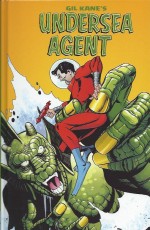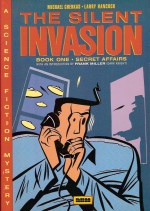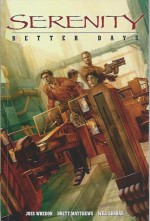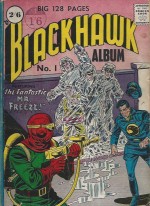
By Gil Kane, Steve Skeates, Gardner Fox & various (IDW)
ISBN: 978-1-63140-444-3
The 1960s was the era when all the assorted facets of “cool-for-kids†finally started to coalesce into a comprehensive assault on our minds and our parents’ pockets. TV, movies, comics, bubble-gum cards and toys all began concertedly feeding off each other, building a unified and combined fantasy-land no kid could resist.
The history of Wally Wood’s legendary comics Camelot is convoluted, and once the mayfly-like lifetime of the Tower Comics line folded, not especially pretty: wrapped up in legal wrangling and lots of petty back-biting. None of that, however, diminishes the fact that the far-too brief run of T.H.U.N.D.E.R. Agents was a benchmark of quality and sheer bravura fun for fans of both the still-reawakening superhero genre and the popular media’s spy-chic obsession.
In the early 1960s James Bond movie mania was going from strength to strength, with action and glamour utterly transforming the formerly understated espionage vehicle. The buzz was infectious: soon A Man like Flint and Matt Helm were carving out their own piece of the action, even as television shanghaied the entire trope with the irresistible Man from U.N.C.L.E. (which premiered in September 1964), bringing the genre into living rooms across the world.
Before long, wildly creative cartooning maverick Wood was approached by veteran MLJ/Archie Comics editor Harry Shorten to create a line of characters for a new distribution-chain funded publishing outfit – Tower Comics.
Woody called on some of the biggest names in the industry to produce material in the broad range of genres requested (as well as T.H.U.N.D.E.R. Agents, its spin-offs Dynamo and NoMan and associate title U.N.D.E.R.S.E.A. Agent, there was the magnificent war-comic Fight the Enemy and youth-oriented comedy Tippy Teen).
Samm Schwartz and Dan DeCarlo handled the comedy book – which outlasted all the others – whilst Wood, Larry Ivie, Len Brown and more crafted landmark and benchmark tales for the industry’s top talents to illustrate in truly innovative style. It didn’t hurt that all Tower titles were in the beloved-but-rarely-seen 80 Page Giant format: there was a huge amount to read in every issue!
Tapping into the Swinging Sixties’ twin entertainment zeitgeists – sub-sea adventure and spy sagas – Tower supplemented their highly popular acronymic star-turn, The Higher United Nations Defense Enforcement Reserves (T.H.U.N.D.E.R. Agents) with a United Nations Department of Experiment and Research Systems Established at Atlantis: an aquatic vehicle employing U.N.D.E.R.S.E.A. Agent against crooks, aliens, monsters, enemy agents and the inimical forces of the environment they operated in.
Unlike the dry-land series, however, U.N.D.E.R.S.E.A. Agent began with their strong, solid stories (by D. J. Arneson, Steve Skeates and Don Segall) being illustrated in a traditional manner by industry veteran Ray Bailey – plus occasional stints from Mike Sekowsky, Joe Giella, Frank Giacoia, John Giunta, Frank Bolle, Manny Stallman and Sheldon Mayer.
According to this collection’s appreciative Foreword by Greg Goldstein and reiterated in Michael Uslan’s fact-filled Introduction, that old school stuff didn’t sit well with the kids and in issue #3 Gil Kane moved over from T.H.U.N.D.E.R. Agents and came aboard to inject his unique, hyper-energetic human dynamism to the watered-down project.
Just a personal aside here: Although I bow to no one in my admiration for Kane and applaud this superb hardback compilation of his U.N.D.E.R.S.E.A. Agent contributions, I also adore the other stuff – especially Bailey’s workmanlike, Caniff-inspired renditions – and eagerly anticipate the day someone finally gathers the entirety of the six-issue run in one commemorative tome…
This superb book however – compiled to celebrate the astounding transformation in Kane’s own artistic endeavours which sprang from his brief time at Tower – reprints the breakthrough material which led to his sudden maturation into a world-class Auteur.
Kane was then a top-rated illustrator but would soon become one of the pivotal players in the development of the American comics industry, and indeed the art form itself. Working as an artist and, after this, an increasingly more effective and influential one, he has drawn for many companies since the 1940s, on superheroes, action, war, mystery, romance, movie adaptations and most importantly perhaps, Westerns and Science-Fiction tales.
In the late 1950s he was one of editor Julius Schwartz’s key artists in regenerating the superhero. Yet by the mid 1960s, at the top of his profession, this relentlessly revolutionary and creative man felt so confined by the juvenile strictures of the industry that he dreamed of bold new ventures which would jettison the editorial and format bondage of comicbooks for new visions and media.
In U.N.D.E.R.S.E.A. Agent #3-6 (spanning June 1966 to March 1967) he was allowed to ink his own pencils for the first time in decades and encouraged to experiment with form, composition and layout – and write too – and Kane discovered a graphic freedom which opened up the way he told stories and led directly to his independent masterpieces His Name is Savage and Blackmark…
(His Name Is Savage was an adult-oriented black-&-white magazine about a cold and ruthless super-spy in the Bond/Helm/Flint mould; a precursor in tone, treatment and subject matter of many of today’s adventure titles. Blackmark not only ushered in the comic book age of Sword and Sorcery, but also became one of the first Graphic Novels. Technically, as the series was commissioned by fantasy publisher Ballantine as eight volumes, it was also envisioned as America’s first comics Limited Series.)
So what have we here? Lieutenant Davy Jones is the U.N.D.E.R.S.E.A. Agent, a skilled diver who, whilst working at the international science lab Atlantis, had an accident which gave him magnetic powers that had to be controlled and contained by a hi-tech belt. His boss was affably brilliant boffin Professor Weston and Jones had a young, impetuous apprentice seaman as sidekick.
Skooby Doolittle joined him in tackling monsters, amok experiments and a remarkable number of crooks, mad masterminds and spies who thought pickings were easier under the sea…
Kane’s contributions commence with ‘The Will Warp’ – from UA #3 and written by Skeates – wherein our dashing heroes have to contend with the diabolical Dr. Malevolent who has perfected a ray that controls minds. Soon the vile villain has taken over Atlantis but has not reckoned on the speed of reaction and sheer determination of Jones and Doolittle…
Skeates also scripted Kane’s tale in #4 wherein Skooby has an unfortunate lab accident and is transformed into a colossal ravening reptilian. Amidst a storm of destruction and with his best friend now an actual danger to shipping, Davy is forced to extreme measures ‘To Save a Monster’…
‘Born is a Warrior’ (#5 and written by Kane’s long-time collaborator Gardner Fox) sees hero and partner go above and beyond in their efforts to overthrow an undersea invasion by aliens, before the astounding adventures conclude with a potent, extra-length tale of triumph and tragedy.
‘Doomsday in the Depths’ (#6, by Fox) finds Jones lost at sea and swept into a utopia beneath the sea floor. Trapped forever in the paradise of Antor, he finds solace in his one true love: the sumptuous scientist Elysse. Sadly, Davy is forced to abandon the miracle city and girl of his dreams to save them all from a horrific monster. Although ultimately victorious, he cannot find his way back…
A glorious cascade of scintillating fantasy action; these yarns – accompanied by a cover gallery by Kane – hark back to a perfect time of primal and winningly uncomplicated action adventure. This is a book to astound and delight comics fans of any stripe or vintage.
Gil Kane’s UNDERSEA Agent © 2015: UNDERSEA Agent © 2015 Radiant Assets LLC. All rights reserved.










